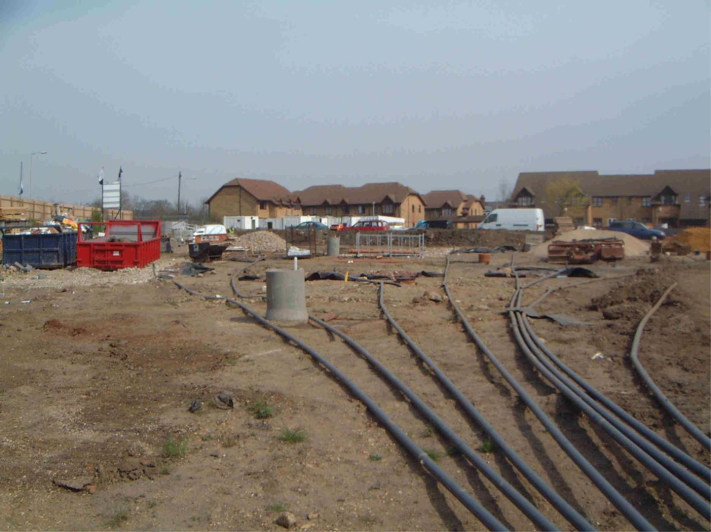Soil vapour extraction (SVE), also known as soil venting, involves extracting air from the vadose zone to volatilise and remove contaminants, particularly volatile organic compounds (VOCs). This process often stimulates in situ biodegradation of bio-labile contaminants by enhancing oxygen availability. Bioventing, a variant of SVE, focuses on optimising air movement to maximise biodegradation and minimise off-gas treatment. Techniques like multi-phase extraction and skimming can complement SVE, particularly in areas with light non-aqueous phase liquids (LNAPLs), by extracting both air and groundwater. These approaches not only expand the treatment volume but also promote biodegradation at the water table interface, a process referred to as "bioslurping."
The effectiveness of SVE is influenced by the contaminant's volatility, soil permeability, and vapour flow paths. Challenges include soil heterogeneity, which can create preferential flow paths and hinder uniform remediation, and the limitations imposed by low-permeability soils, high organic matter content, and excessive moisture. These factors can restrict air flow and impede the desorption of VOCs from soil particles. SVE systems often include impermeable geomembrane covers to prevent short-circuiting of air flows and require a network of wells to ensure comprehensive treatment across all soil strata.
Bioventing extends the range of treatable contaminants by leveraging microbial activity to degrade less volatile organics while reducing costs associated with off-gas treatment. Variants such as co-metabolic bioventing introduce gases like methane or propane to stimulate specific biodegradation pathways, which can incidentally target contaminants like chlorinated alkanes. Additionally, heating techniques, including hot air and steam injection, have been explored to enhance both volatilisation and biodegradation, though these methods are more commonly applied in ex situ settings for optimal control and efficiency.
While SVE and its variants offer a range of benefits, including a small operational footprint and adaptability to diverse soil types and site conditions, the method is best suited to granular soils and is less effective in low-permeability or water-saturated environments. Regulatory concerns often focus on fugitive emissions and potential nuisances like noise and odour, necessitating careful monitoring and control. Despite these challenges, SVE remains a valuable tool for managing contamination in the vadose zone, often used alongside other remediation methods like air sparging or in situ thermal techniques for a more integrated approach.



